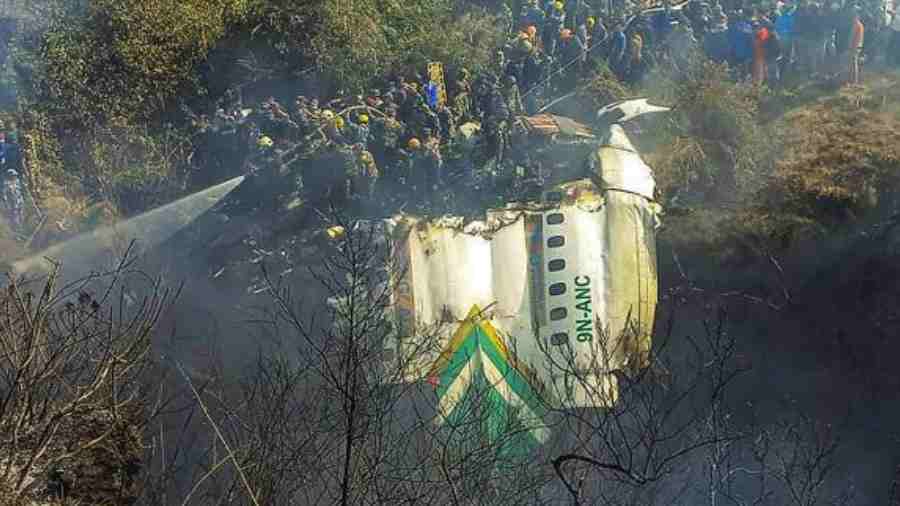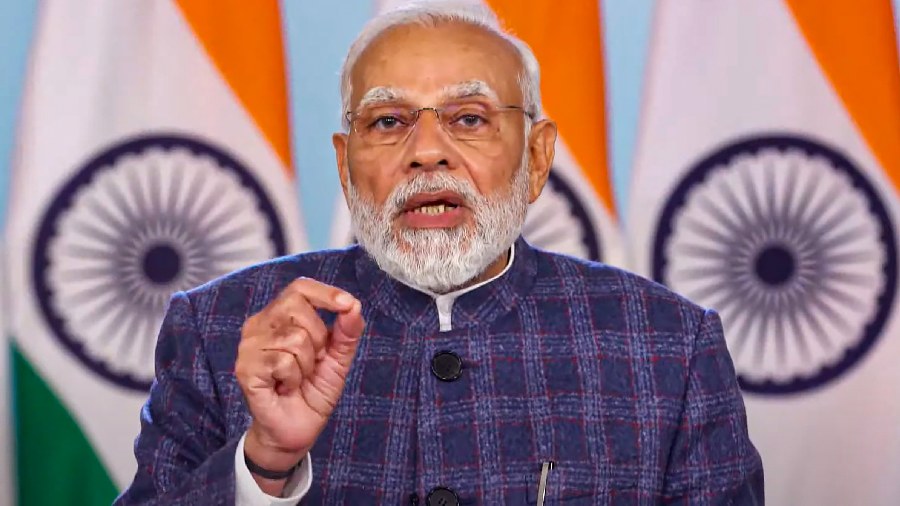At least 68 people were killed on Sunday when a Nepalese passenger plane carrying 72 people, including 5 Indians, crashed into a gorge while trying to land at the new airport in the resort city of Pokhara, a rescue official said.
Yeti Airlines’ 9N-ANC ATR-72 aircraft took off from Kathmandu’s Tribhuvan International Airport at 10.33am and crashed on the banks of the Seti river between Pokhara’s old and new airports, the Civil Aviation Authority of Nepal said.
The air crash is the worst in three decades in Nepal, which has had a fraught record of aviation accidents, partly because of its sudden weather changes and airstrips located in hard-to-access rocky terrains.
Rescuers said 68 bodies had been found and a search was on for the four missing people. Yeti Airlines said there was no information about any survivor. However, an eyewitness said local residents had taken two passengers to hospital.
Flight tracking website FlightRadar24 said on Twitter the Yeti Airlines aircraft was 15 years old and equipped with an old transponder with unreliable data. Spokespersons for the airport and the airline said the weather was fine.
Local media reported that the aircraft had taken a wider turn while attempting to land, which may have caused the accident. The new airport, built under a Chinese soft loan, was inaugurated just two weeks ago.
Khum Bahadur Chhetri, a local resident, said he watched from the roof of his house as the flight approached.
“I saw the plane trembling, moving left and right, and then suddenly it nosedived and went into the gorge,” Chhetri told Reuters, adding that residents took two passengers to a hospital.
The plane carried 68 passengers and 4 crew members. The foreign nationals on board included five Indians, four Russians, two Koreans, an Australian, a French, an Argentine and an Israeli. Among the passengers were three infants and three other children.
Pokhara airport spokesperson Anup Joshi said the aircraft crashed as it approached the airport, adding that the “plane cruised at 12,500 feet and was on a normal descent”. The weather was clear, he said.
“The weather in Pokhara was absolutely fine and the engine of the aircraft was also in good condition,” Yeti Airlines spokesperson Sudarshan Bartaula said. “We don’t know what has happened to the airplane.”
The Pokhara airport was closed to all incoming and outgoing flights on Sunday after the crash.
Rescue hurdles
Images and videos posted on social media showed plumes of smoke billowing from the crash site. Local TV showed rescue workers scrambling around broken sections of the aircraft. Some of the ground near the crash site was scorched, with licks of flames visible.
Shortly after the crash, police began a rescue operation. However, the police said it was not possible to deploy enough manpower. Officers said that bringing the fire under control was difficult as the fire engine could not reach the gorge.
Police spokesperson Gyan Bahadur Khadka said the difficult terrain and “a crowd of thousands” had made the rescue operation difficult. “Due to the crowd, there has been a problem... even the ambulance and fire brigade have been hindered,” he said.
The journey from Kathmandu to Pokhara, Nepal’s second-largest city tucked under the picturesque Annapurna range, is one of the country’s most popular tourist routes.
Video clips
An aircraft accident investigator said that going by one of the video clips on social media, the nose of the aircraft slightly went up and the wings drooped to the left before the crash happened, and there could have been a stall (reduction in lift).
While the exact reasons for the crash will be known only after the probe is complete, it looks at first sight like a possible mishandling by the pilot or malfunctioning of the plane’s angle-of-attack system, he said.
Rigorous checks
The Nepal government has directed that every domestic airline’s aircraft must undergo rigorous inspections before flights. A public holiday has been announced on January 16 to mourn the crash victims. The ATR-72 of European planemaker ATR is a widely used twin-engine turboprop plane, manufactured by a joint venture of Airbus and Italy’s Leonardo.












